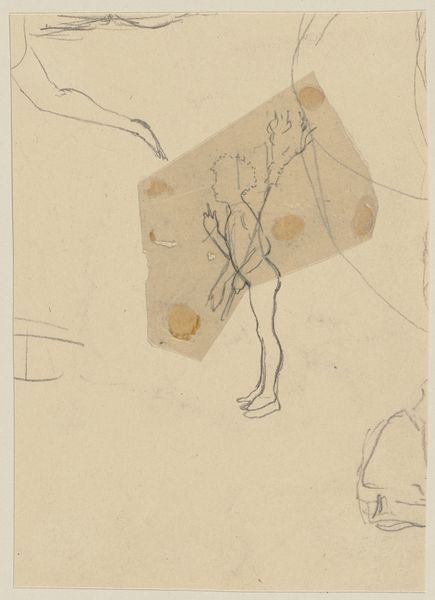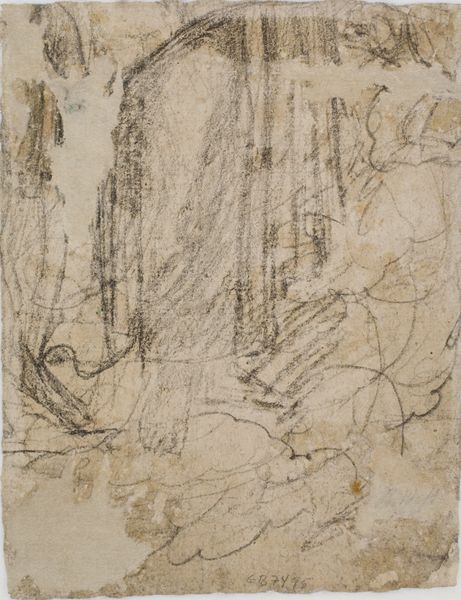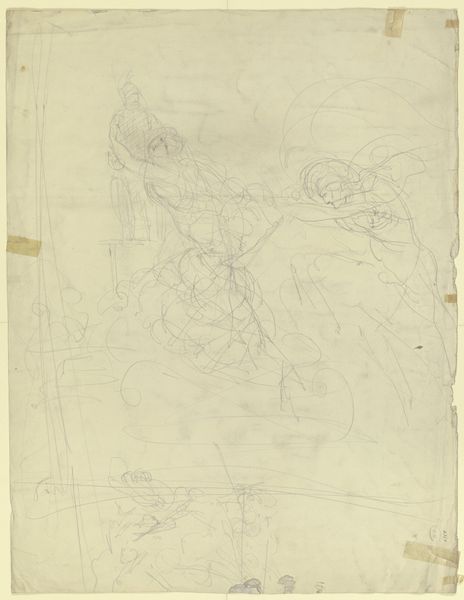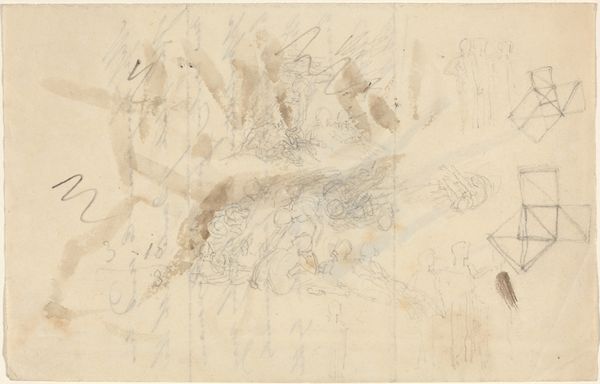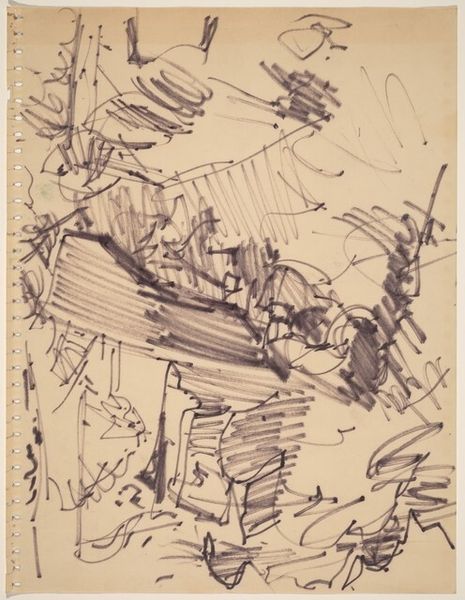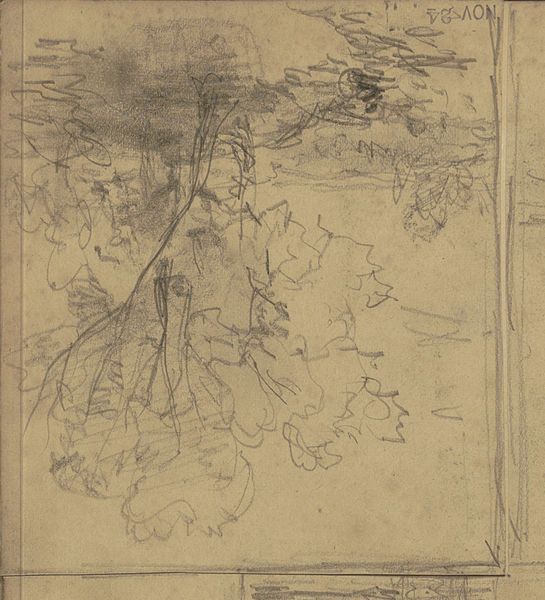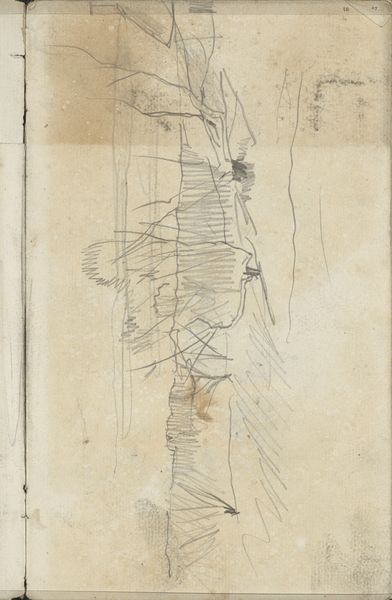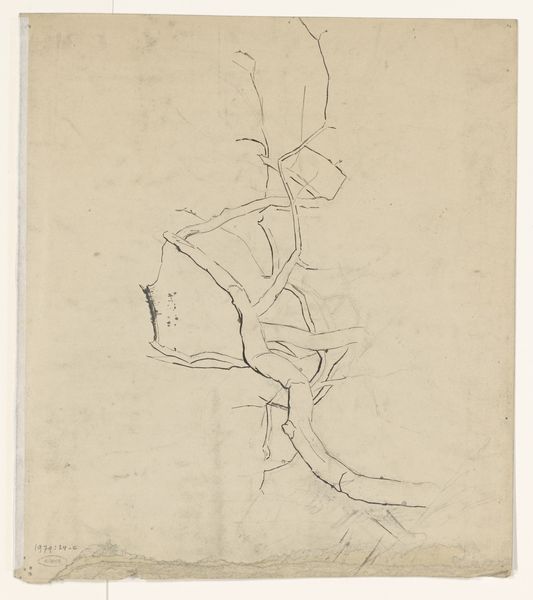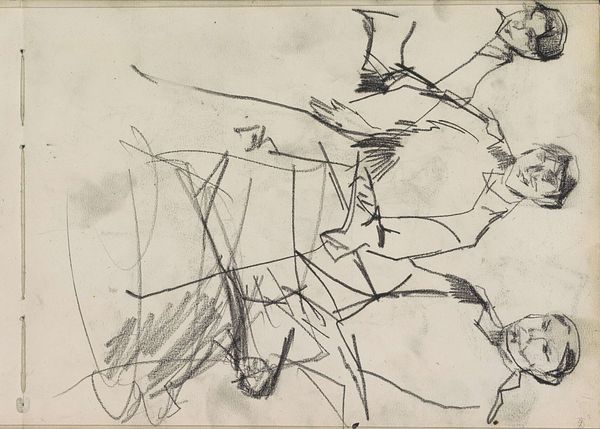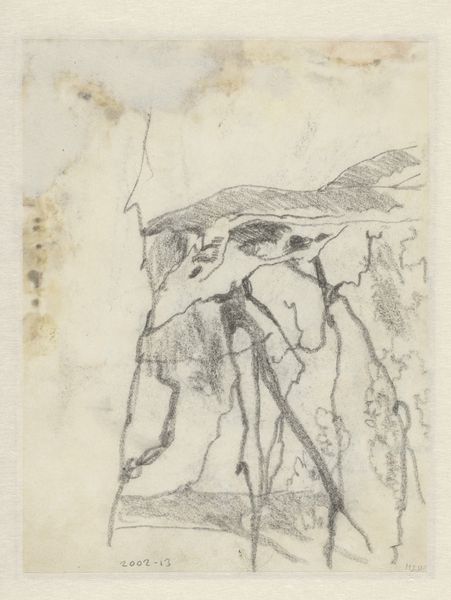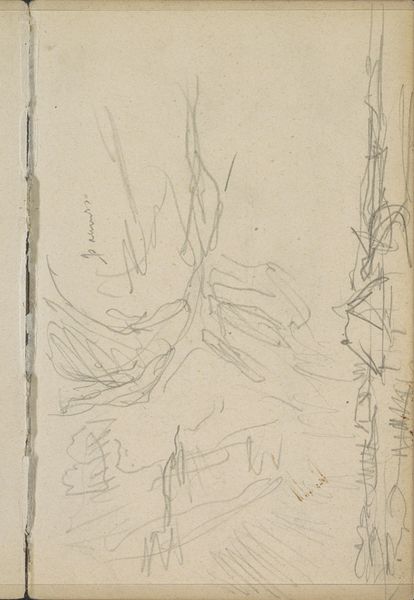
Lysander und Hermia, in Blumenranken schlafend, zwischen ihnen sowie rechts von ihnen Puck mit der Zauberblume, den Zeigefinger an die Lippen gelegt c. 1867 - 1868
0:00
0:00
Copyright: Public Domain
Editor: Here we have Paul Konewka's "Lysander and Hermia Asleep in Tendrils of Flowers, Puck with Magic Flower Between Them and to Their Right, Finger to His Lips," made around 1867 or 1868. It's a pencil drawing on paper that strikes me as quite dreamlike, almost ephemeral in its lines. What stands out to you as you look at it? Curator: Well, looking at the materiality, it’s not just pencil, but also appears to be an etching. Consider the paper itself – the fibers, likely a mass-produced rag paper of the time, making art accessible to a broader audience, removed from vellum. The very *act* of etching multiple copies… that transforms our reading of this scene from *A Midsummer Night’s Dream*. Editor: How so? Curator: It isn't simply a unique artistic vision, but becomes an object for consumption. We have affordable art depicting affordable fantasies! The artist, Konewka, leverages familiar stories through readily available materials for growing consumer demand. Think about the implications: fairytale accessible, and therefore democratized via production processes. Where does 'art' end, and commerce begin? Editor: So you’re saying the materials used are crucial to understanding its meaning beyond the fairy tale itself? The "cheapness", say, speaks to a shifting audience? Curator: Precisely. The mode of production informs how people engage with high art. By etching on relatively inexpensive paper instead of crafting something precious and unique, Konewka opens access and reframes consumption of artistic stories like Shakespeare. Editor: That's fascinating. I hadn't thought about the social context of the materials in quite that way before. It makes me wonder about the labor involved in each print, too, and who had access to this kind of storytelling. Curator: And THAT, is exactly the right question! It reshapes how we understand both its appeal and place it within its particular 19th century moment. Editor: It completely shifts my perspective. It's more than just a romantic scene; it’s about access and production. Thank you!
Comments
No comments
Be the first to comment and join the conversation on the ultimate creative platform.
